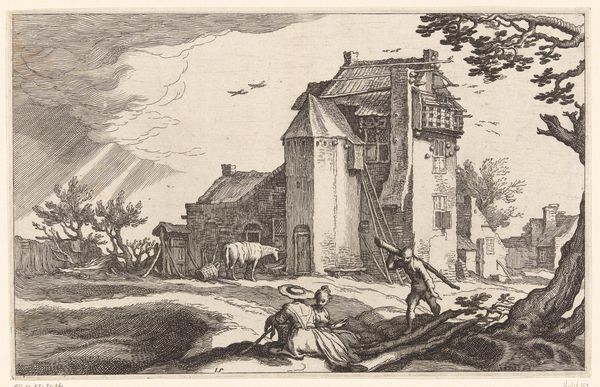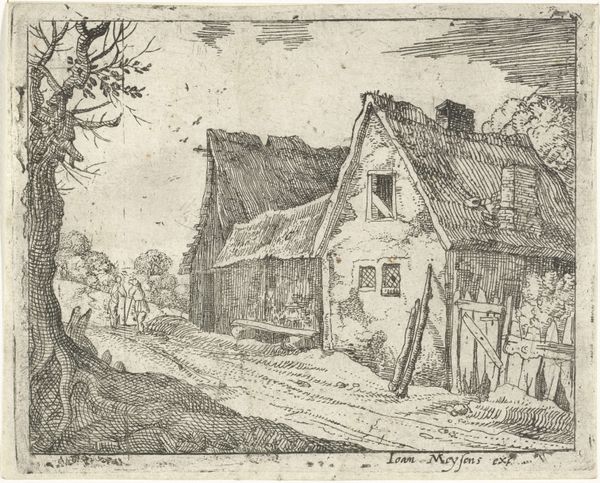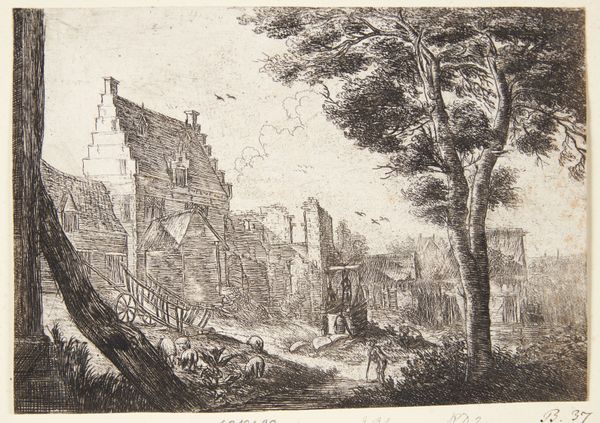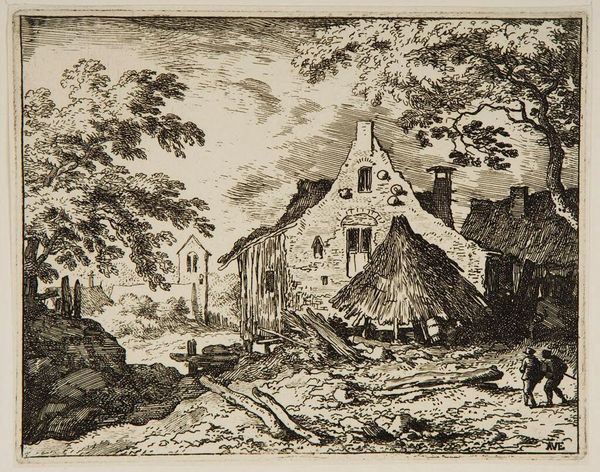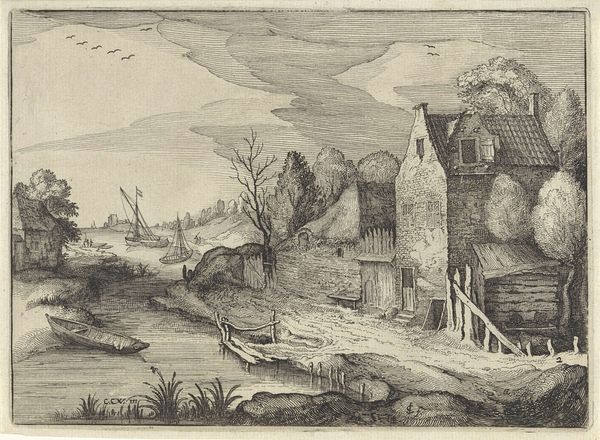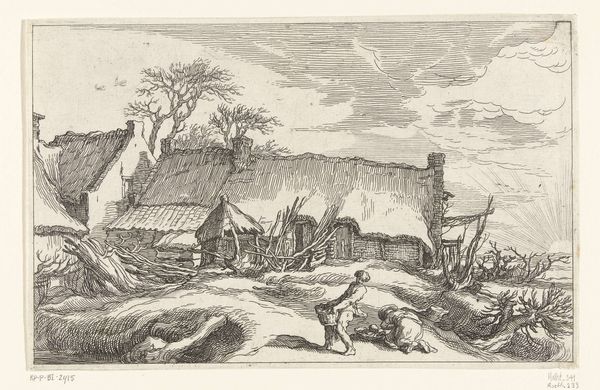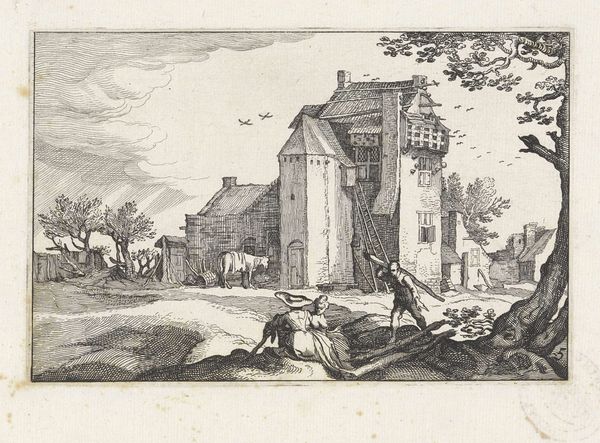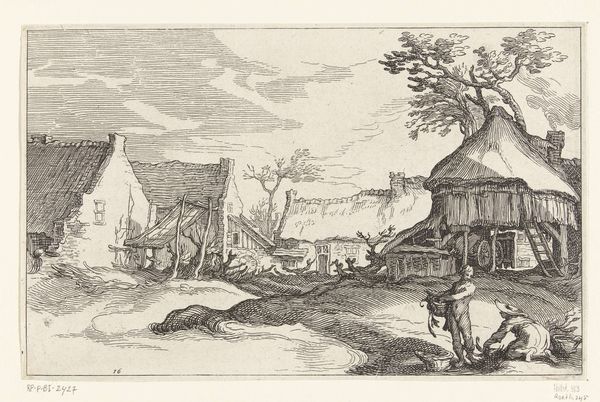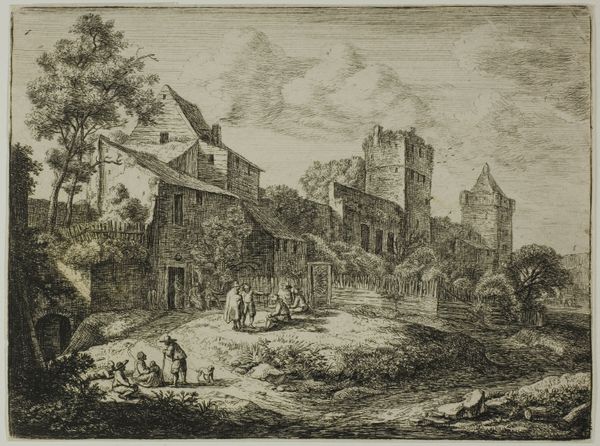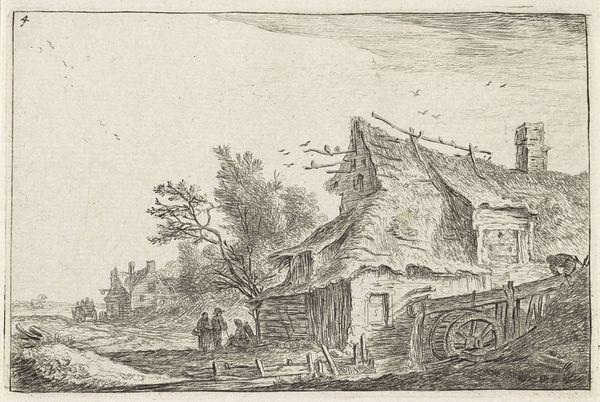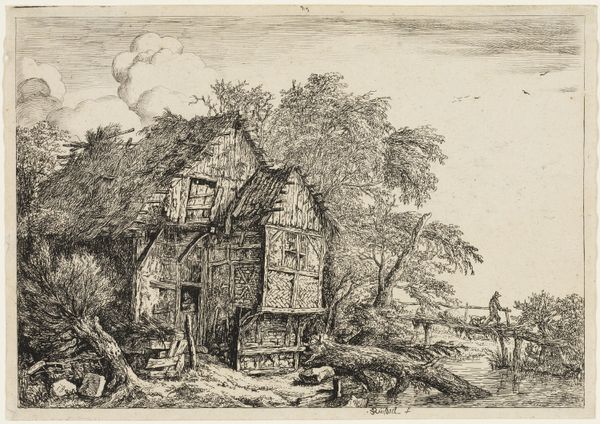
print, engraving
#
ink drawing
#
baroque
#
pen drawing
#
dutch-golden-age
# print
#
landscape
#
figuration
#
line
#
genre-painting
#
engraving
#
realism
Dimensions: height 158 mm, width 247 mm
Copyright: Rijks Museum: Open Domain
Curator: This engaging 1614 engraving, titled "Farmhouse and Shepherd with Sheep", is by Boëtius Adamsz. Bolswert, currently held at the Rijksmuseum. Editor: It strikes me as a scene steeped in labor, but with an interesting tranquility, don’t you think? The cross-hatching is exquisite; the textures nearly palpable despite the simplicity of the linework. Curator: Absolutely. There’s an interesting dynamic at play. Consider the context. This pastoral scene arrives in the midst of the Dutch Golden Age. The burgeoning mercantile class shapes artistic concerns: moving beyond exclusively religious or aristocratic patronage, Dutch art began engaging with, and representing, broader societal strata. Editor: And here we see the iconic figure of the shepherd, eternally linked to ideas of care, simplicity, and even sacrifice in Judeo-Christian symbolism. Note how the farmhouse looms large, solid; the very image of Dutch stability. The humble shepherd almost leans against this societal bulk, but is separate from it. It projects this balance between nature and dwelling. Curator: I agree. But consider too, the economic structure implied in that visual relationship. Who truly benefits from this bucolic setting? Land ownership, gendered labor, access to markets—these elements are critical to interrogating the work’s meaning. The “simplicity” we observe is predicated on complex social structures. It's crucial to investigate the power relations depicted. Editor: A provocative counterpoint. Indeed, the engraving’s very composition speaks volumes. The houses almost ‘guard’ the scene. The Shepherd almost is like a personification of labor—perhaps of resilience itself? He seems at ease—at peace even—amongst the flock, within his position. He’s literally the closest figure to the foreground. Curator: Bolswert doesn’t offer easy answers. He situates the figures, both human and architectural, within a network of dependencies. So, the piece, ultimately, serves to present not only a beautiful slice of rural life, but to propose a space in the popular imagination, for thinking through who these subjects were, how they subsisted, and perhaps more vitally: on whose labor and economic support structures, this all occurred. Editor: Very astute observations! I’ll carry these thoughts with me as I consider this rich, and somewhat deceptive, pastoral tableau.
Comments
No comments
Be the first to comment and join the conversation on the ultimate creative platform.

